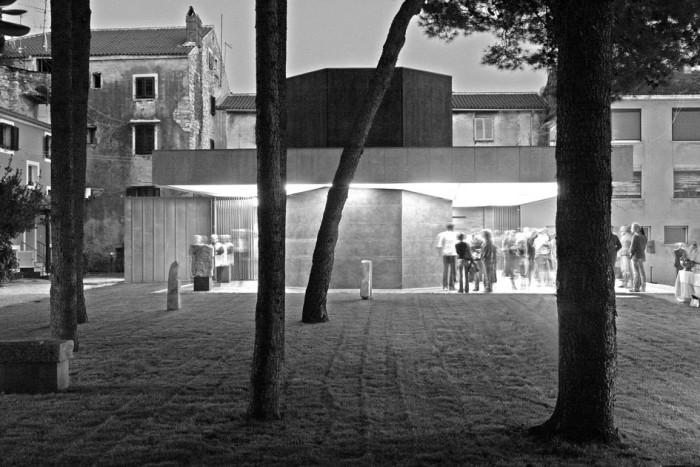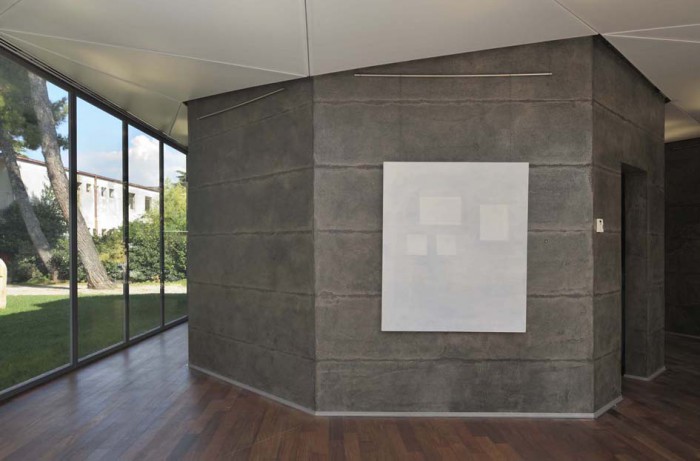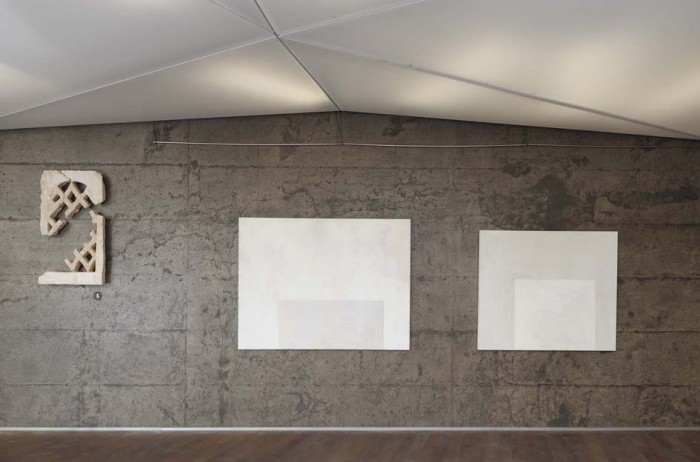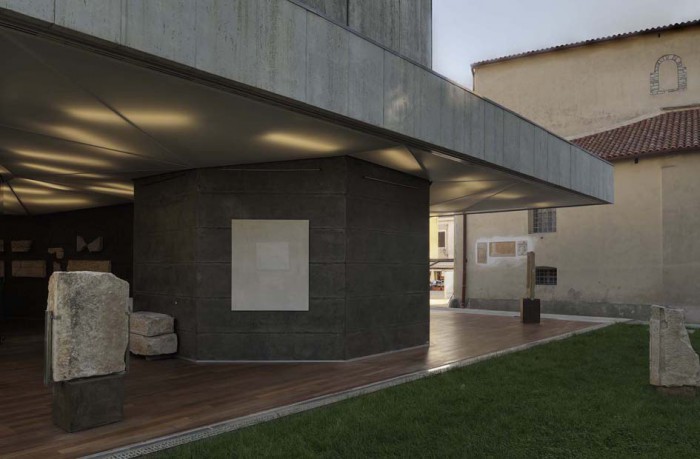Parietes
2010

Lapidarium Museum, Cittanova/Novigrad
Curated by Ekaterina Inozemtseva
September 22nd – October 26th, 2010
Exhibition views by Yuri Palmin
Memory is probably the most distinctive aspect of European culture. The collective ability to interpret the world through the past has permeated and informed the Weltanschauung of European countries since their formation following the collapse of the Roman Empire. One has only to think of Dante’s Divina Commedia, which was written as early as XIIIc. The dead souls Dante encounters in the Inferno, Purgatiorio and Paradiso come alive and are full of their human dignity precisely because they are able to reminisce and recapture their past life on earth. Dante, in his voyage in the other world, becomes not only the depositary of their past memories but also the means of maintaining their memory in the future. ‘Ricorditi di me che son la Pia…’ ‘Remember me’ implores Pia de’ Tolomei when she meets Dante in Purgatorio. Down the centuries another European masterpiece, Marcel Proust’s ‘A la recherche du temps perdu’, adds a new dimension to the notion of memory. This, while still being a conscious exploration of the past, is now an involuntary link with that past which the taste of a madeleine, or the scent of a public lavatory on the Champs Elysees, can evoke. Of course, it is not just in literature that the concept of memory surfaces in Europe: Freud’s Oedipus complex for instance, which is one of the most defining attempts to explain the human psyche, is based on the possibility that our childhood memories are encrypted in our body. But, probably, it is in architecture that the most pervasive signs of Europe’s desire to preserve the memory of its past can be found. Europe is simply littered with historical towns where the vestiges of past buildings and even of their memory are considered an essential part of the local culture.
Novigrad is no exception. Built around VIIIc when Charlemagne was expanding his empire to the East, it very quickly became an important political and religious centre. Although its fortunes soon changed, the cathedral built at the time lingered on until the present day when only its memory and few fragments remain. In 2006 the town wanted its cathedral back in some form and that is how this ghost-like feature materialised in a new building which, with its octagonal corpus, clearly plays homage to the former cathedral’s baptistery. Lapidarium, as it is called, houses the cathedral’s surviving stones while also being a venue for exhibitions by contemporary artists.
Frequently, artists who are invited to exhibit in spaces that have their own history tend to enter into a dialogue with them. But Alexandra Paperno, in showing her series of paintings ‘Parietis’ at Lapidarium, does more than that. Her work and the centre not only inter-relate with each other, but together they sing a graceful counterpoint duet to the melody of memory. On first seeing Paperno’s paintings they appear to be of an abstract nature: geometrical patterns vaguely marked out by elegant but subdued colours which seem to be a nuanced variation of the background; well proportioned and unassuming, they succeed in giving the full composition a sense of stillness and serenity. But then, on reading the stark, matter-of-fact titles of each painting -A sofa has been standing here, A carpet has been hanging here and so forth – and relating them to the title of the series (Parietis is Latin for domestic wall), one becomes aware that the paintings go beyond pure aesthetic contemplation. They each have their own understated narrative, and in their restraint, they actually shout; it is a shout that reverberates in empty spaces where absence is absolute. Where are the piano, the sofa, the pictures gone? We don’t know and never will, but their memory is there, even if it is just a shadow on a wall. Paperno’s melancholic meditation on memory is counterbalanced by Lapidarium. For the artist, memory means absence, for Lapidarium it is presence: the concrete reaffirmation of the collective memory of the cathedral. On Paperno’s walls there only remain shadows of things gone, while on the centre’s wall are stones that are emerging from the past; For Paperno memory is private and domestic, for Lapidarium memory is about a communal and public space. The artist and the centre definitely come together to sing a perfect duet.
Francesca Piovano





